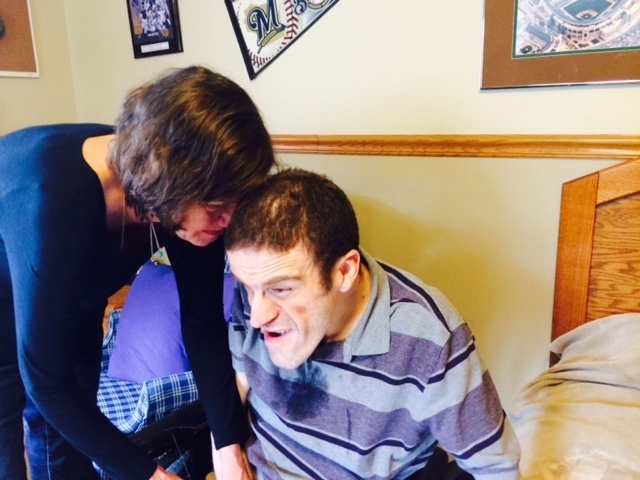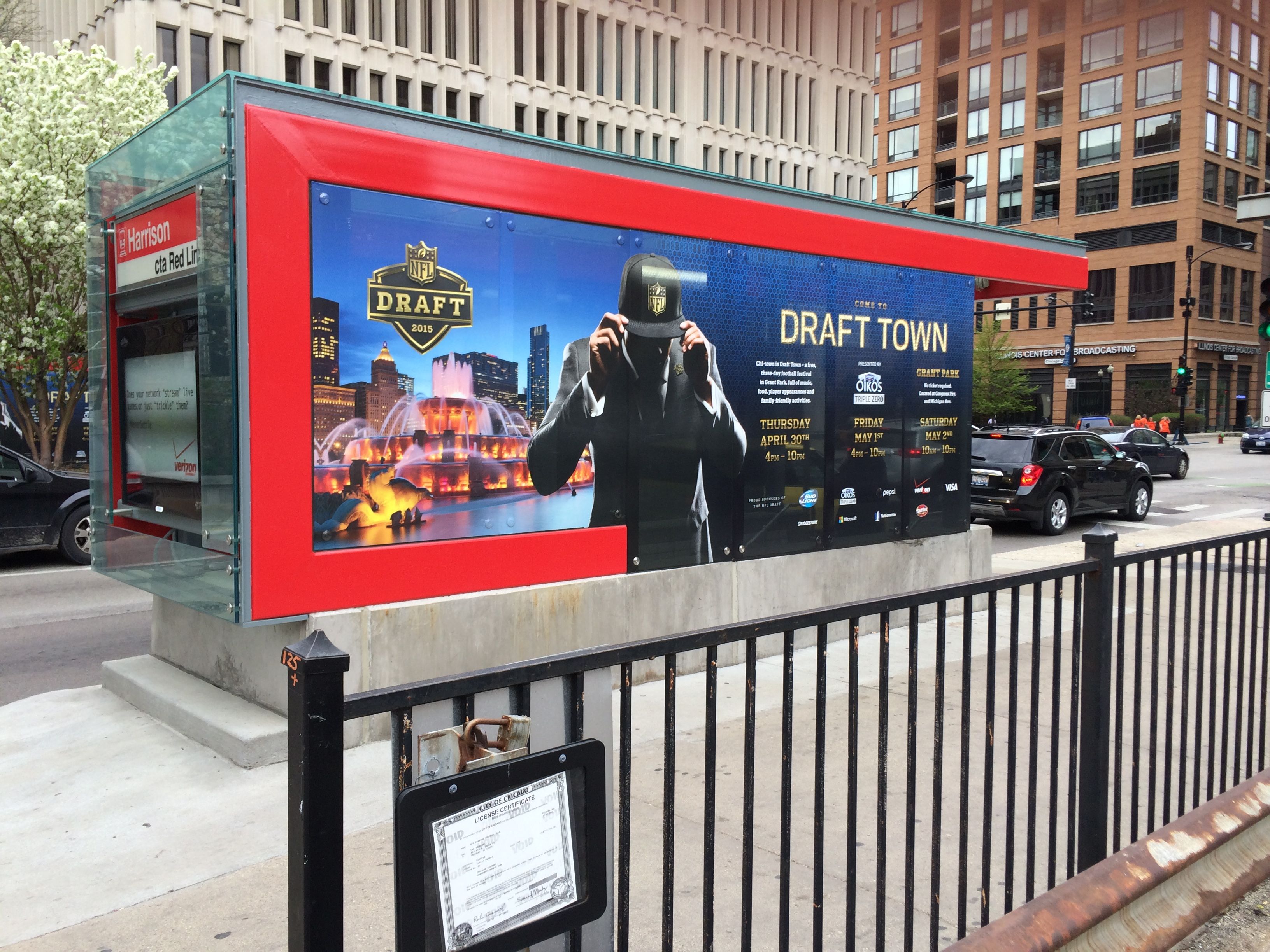Mondays with Mike: Our version of all right
May 10, 2015 • 22 Comments • Posted in blindness, Mike Knezovich, Mondays with Mike, parenting a child with special needs, UncategorizedA couple weeks ago as I walked to a sandwich shop I was stopped in my tracks by the sight of a boy in a wheelchair and a man, presumably his dad, collecting themselves on the sidewalk. They had clearly just unloaded from the car parked nearby, and were readying for a walk.
It wasn’t the kind of wheel chair designed to be propelled by its user. It was, instead, focused on holding the boy—who clearly had substantial physical disabilities—in proper posture, with a headrest, and foot rests arranged for that purpose, and with high handles to make it easy for someone else, in this case his dad, to push. Seeing it was a flashback to my own rituals of outings with our son Gus.
The father made a last round of adjustments to the boy’s ball cap, to his seatbelt, and then gathered himself to push his son on a walk.
For a moment, I wanted to walk up to him to say something like, well, I didn’t know what. That it’ll be all right? What the hell did I know about whether it would be all right? And as a frog the size of Alaska grew in my throat, I thought better of saying anything to him just then, because well, a stranger walking up and breaking into tears might not lift up his day.
By the time I left the shop with my sandwiches, and I was more composed, the man and his son were long gone.
This past weekend Beth and I traveled to Wisconsin to see our son Gus, who is 28 and living in a group home with three other guys. The weather was nice, and—though Gus did eventually learn to propel his own wheelchair, I supplied the horsepower this time, pushing him with Beth holding onto my arm. (Whitney stayed in our hotel room, as she is either jealous of or unnerved by Gus; a little of both, I think.)
We had a happy, uneventful visit, like we always do, and are always grateful to have. We took our Zipcar back to our Milwaukee area hotel, visited with a friend who moved up there recently from Chicago, and spent a quiet night.
The next morning, we headed to the Amtrak station and boarded right on time. We sat up front in the disability seats so Whitney had room to stretch out. A woman who was sitting in the disability section across the aisle from us noticed the dog after we settled, leaned over and asked whether we wanted her space, as it provided more space for Whitney.
After a few seconds, she realized we had the same kind of spacious accommodations and said, “Oh, I didn’t see you already have room.”
Minutes later, after the train eased out of the station, she leaned over and said to Beth, “Can I be so bold as to ask how long you’ve had that dog and how it’s working for you?”
Well, 20 minutes later we’d learned that she’d lost her sight in one eye and the other was in bad shape. All to diabetic retinopathy—the same thing that got Beth’s eyesight decades ago. That she was a couple years older than us, and that she’d been diabetic for 50 years. A nurse herself, she’d always been praised by her doctors for being a model diabetic. But that’s not always enough.
She and her husband’s situation is a lot like Beth’s and mine had been some 30 years ago. She’d had good doctors and bad doctors and doctors who had the bedside manner of Attila the Hun. She can see some out of one eye and is in that awkward phase where she is doing just well enough and badly enough by herself to annoy or frighten the people around her. She isn’t blind—yet, but she wants to get ready in case total blindness comes. But how? She needed help but didn’t want to drag down her husband with endless needs, nor did she like losing independence and needing his help. For his part, her husband, a “type A” as she put it, seemed to be struggling not to over protect.
Her experience rang so familiar that it gave me that feeling I had when I saw that man and his son. This time, though, Beth could carry the conversation while I reset myself. Eventually, as Beth and I related our experiences—and how similar they were to our new acquaintance—it seemed almost revelatory to the woman across the aisle.
On her request, I wrote down the title of Beth’s book and said, “I added my email address, too” and let her know she could contact us. We said goodbye and I followed Whitney as she led Beth off the train. An Amtrak redcap came to assist our fellow traveler.
I would’ve liked, I suppose, to tell her everything will be all right. The same thing I guessed I’d hoped to be able to say to the young father on the street.
But I didn’t. Because I couldn’t, honestly. Beth and I are better than all right. But it isn’t the all right either of us had in mind. And it was harder than hell to get to our version of all right. That’s what the father and his son on the Chicago street and our stranger on the train face. Even if they have great friends and family and resources, it’s going to be really hard.
What I realized, though, was what I saw in that woman’s face was not so much a revelation as relief, relief in knowing, even briefly, that she wasn’t alone.
And if I ever see that man and his son again, that’s what I’ll tell him. You’re not alone.





